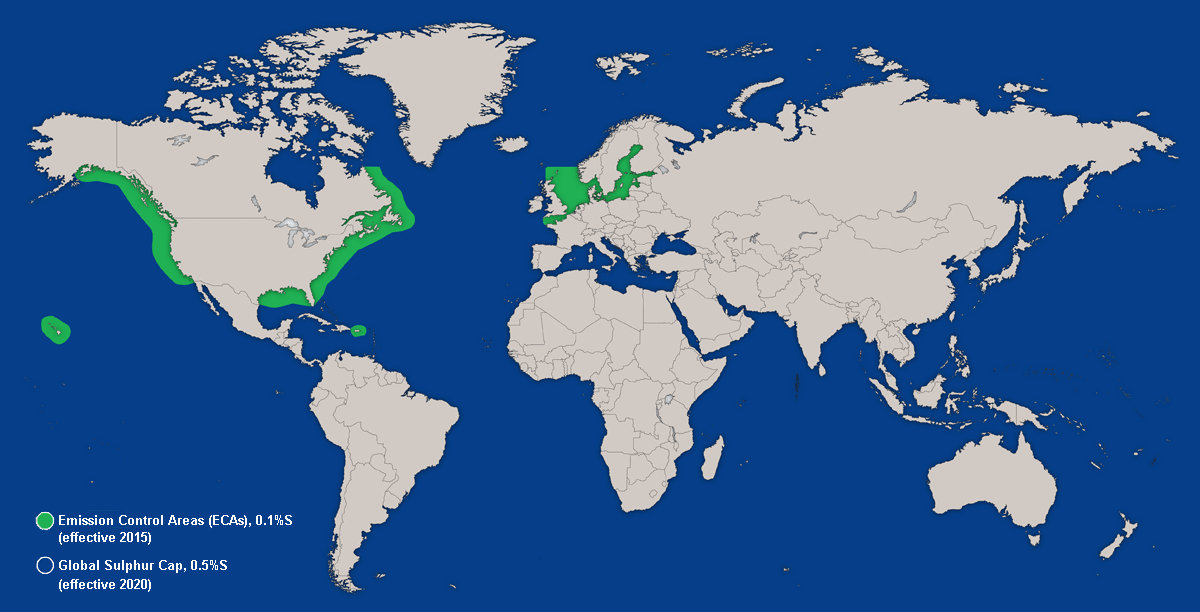대기 배출을 막기 위해 MARPOL 부속서 VI는 전 세계 저유황 연료유 사용 규제와 배출제한구역(ECA)의 엄격한 규제를 확립합니다. 이 법안은 연료의 황 함유량을 규정하는 법안이지만, 배기가스에서 SOx를 정화함으로써 규정을 준수할 수도 있습니다.
MARPOL 부속서 VI은 선박 및 해양용 연료유의 허용 황 함유량을 점진적으로 줄여 가는 규정입니다. 2020년 1월부터는 전 세계에 황 함유량 0.5% 한도가 적용되며, 현재 ECA에는 이미 황 함유량 0.1%의 제한 규정이 있습니다.
목표는 유해한 황 산화물(SO2 및 SO3)과 미립자 물질(PM)이 대기 중으로 배출되지 않도록 하는 것입니다. 이 때문에 IMO는 SOx 스크러버를 설치하고 배기가스를 정화하여 동일한 결과를 얻는 경우, 황 함유량이 더 높은 연료의 사용을 허용합니다.

오늘날의 HFO에는 MARPOL 부속서 VI에 규정된 한도를 훌쩍 뛰어넘는 황이 들어 있습니다. 따라서 선박 회사는 세 가지 옵션을 선택할 수 있으며 각 옵션마다 다른 의미가 있습니다.
PureSOx 같은 스크러버 시스템에 투자하면 MARPOL 부속서 VI 준수를 위해 저유황 연료를 선택하는 선주보다 비용상 이익을 누릴 수 있습니다. 연료 가격의 차이에 따라 투자 회수 기간이 결정되고, 이는 다시 수익을 좌우합니다.
2020년에 전 세계 저유황 연료유 사용 규제가 발효되면 연료 가격이 어떻게 될 것인지는 아무도 모릅니다. 그러나 다음 기사와 자료에 의미와 분석이 나와 있습니다.
SOx 스크러버는 장기적인 연료비 절감의 가능성을 안겨 줍니다. 그리고 Alfa Laval의 PureSOx보다 이러한 가능성이 큰 스크러버 시스템은 없습니다.